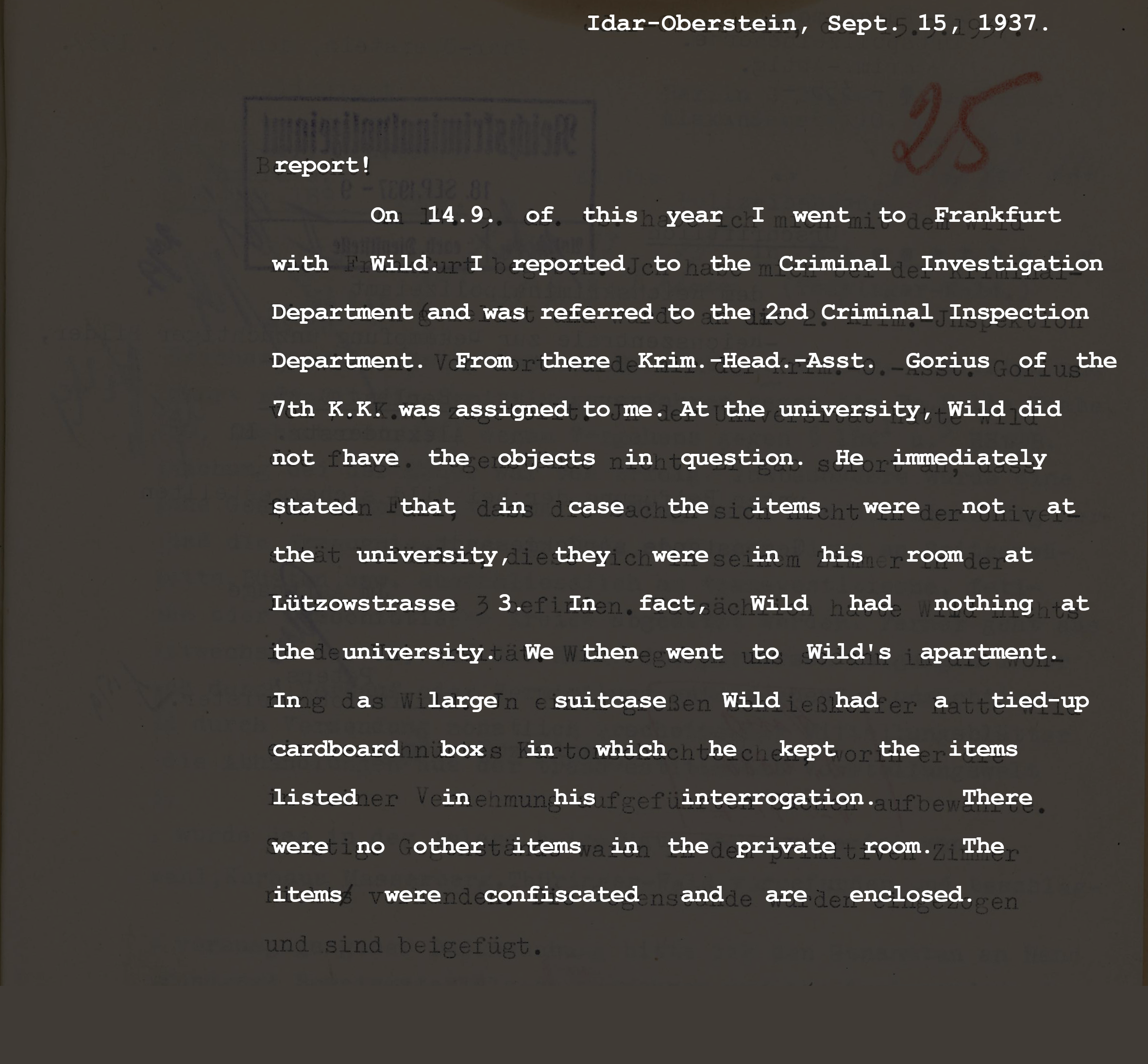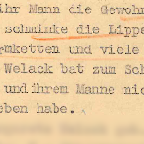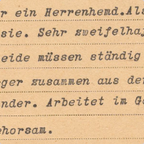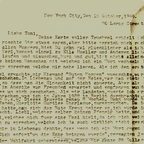Confiscation of Clothing
![Text typed with typewriter on paper: "Idar-Oberstein, Sept. 15,1937. Postmark of receipt: On 14.9. I went to Frankfurt with Wild. I reported to the Criminal Investigation Department and was referred to the 2nd Criminal Inspection Department. Before I got there, the Krim.-O.-Asst. [head criminal assistant] Gorius of the 7th K.K. was assigned to me. At the university, Wild did not have the objects in question. He immediately stated that in case the items were not at the university, they were in his room at Lützowstrasse 3. In fact, Wild had nothing at the university. We then went to Wild's apartment. In a large suitcase Wild had a tied-up cardboard box in which he kept the items listed in his interrogation. There were no other items in the private room. The items were confiscated and are enclosed." Signature of the Head Criminal Assistant.](/media/images/wilduntenverlangert_zSg7uc0.scale-100.jpegquality-100.png)
© Berlin State Archives.
A police report on the seizure of _Wild's clothing

Drivers licence photo 1921, © Idar-Oberstein Town Archive.
As can be seen from this police report dated September 15, 1937, the criminal police found items of clothing with feminine connotations in the apartment of gemstone researcher _Wild in Frankfurt am Main and promptly confiscated them as evidence. _Wild ran the Institute for Gemstone Research in Idar-Oberstein, which at the time of the investigation was a branch of the University of Frankfurt am Main. Therefore _Wild also owned an apartment in Frankfurt.
As part of a nationwide investigation against the Berlin seamstress Hella Knabe, many of her customers' homes were searched, including _Wild's. According to their own statement, _Wild visited Hella Knabe in Berlin in 1933. _Wild later had Knabe send them black stockings, shoes and garters by post. During an interrogation, _Wild stated that they were keeping the items in Frankfurt so that their wife would not find out about their preference for female connoted clothing.
Crossdressing was actually not explicitly punishable under the Nazi regime. Nevertheless, items of clothing with feminine connotations in particular were often confiscated by the police as “evidence” if, according to social expectations, they did not match the gender assigned to the accused at birth. The police hoped to be able to expose those affected as gay men through their clothing, because they derived their sexual orientation from their clothing. The clothing was also used to accuse the suspects of "indecent" motives and concealing their identities.






























